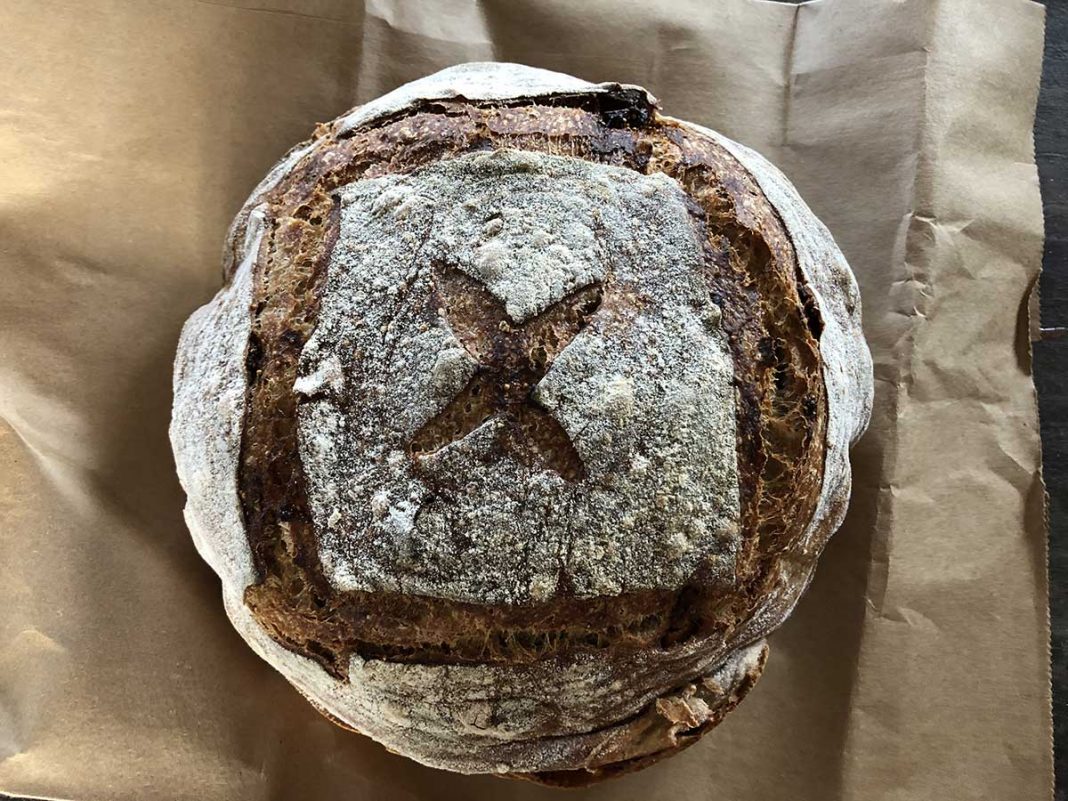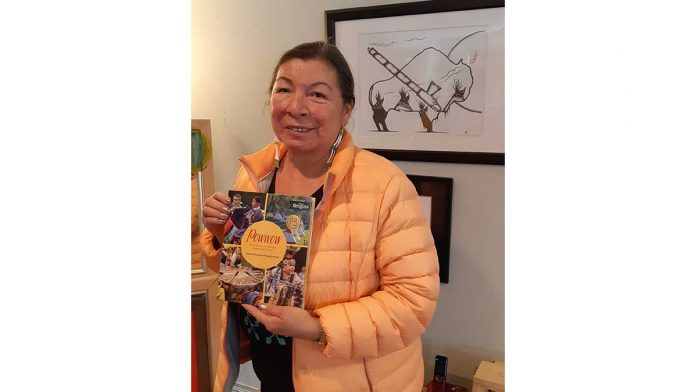SHEGUIANDAH – Noojmowin Teg Health Centre registered nurse and certified diabetic education worker Kendra Recollet is hunkered down with her family while on maternity leave and with three boys, aged six, three and five months, social isolation has been largely the name of the game for quite a while now. Casting about for something adult-ish to do while at home, Ms. Recollet recalled her love of baking.
As anyone who has visited a grocery store lately knows only too well, standard yeast has become a highly desired commodity—seems a lot of folks have re-discovered baking. But the apparent yeast drought doesn’t phase Ms. Recollet in the least, not since she discovered the wonders of sourdough baking.
“I have always loved baking,” said Ms. Recollet over the phone when contacted by The Expositor, “more so pies and cookies. I haven’t ever been much of a bread baker, but I came across this online post about how to make sourdough and just decided to go with it.”
Ms. Recollet explains that instead of using store-bought yeast, the process of sourdough bread-making utilizes the natural bacteria in flour, water and air to create the leavening. “You take a cup of flour and water and essentially just mix them up together in a jar with a loose lid. Every day you take half of it out and refeed it more flour and more water.
The process is repeated again and again until the mixture is strong enough to use for baking.
“It takes about seven to nine days,” said Ms. Recollet. “You will see it rising in the jar. When it doubles or a little bit more I put an elastic around the jar.”

The key test comes when she takes a small piece of the mixture and puts it in a bowl of water. “If it floats it is good to go,” she said. “But you have to keep feeding it. Some people will put it in the fridge to slow it down so they can use it later.” The cooling slows the process down and allows the mixture to last longer between baking sessions.
Ms. Recollet said she tried regular all-purpose flour at first, but swiftly found that to be less optimal than specific bread flour. “There is all-purpose flour, cake flour and pastry flour,” she said. “The cake flour has more proteins in it.” She found getting the right kind of flour challenging.
“I tried the Island Jar (in Little Current) for some Loon Song flour, but they were out,” said Ms. Recollet. “I found a mill in Arva (just outside London, Ontario) and they had flour they were willing to ship me.” This was all well before the COVID-19 pandemic had hit Canada.
Having sampled the high quality flour from the Arva mill, Ms. Recollet said that she would have a hard time going back. “It’s a much better quality; it’s a good thing I have a lot of it on hand,” she laughed.
The bake uses whole wheat flour. “Whole wheat flour is more likely to have the natural wild yeasts in its makeup,” she said. But if whole wheat flour is not to be had, all-purpose flour can still work, it just might take a bit longer.
After trying out the simple recipes she came across, Ms. Recollet started to become more adventurous in her baking forays. One recent experiment used an infusion of Earl Grey tea and figs.
“It was really good!” attested Expositor editor Alicia McCutcheon, who got an opportunity to try the bread out.
Other infusions on the to-do list include jalapeno and chocolate and cinnamon raisin. “I don’t like raisins myself, but I know other people do,” laughed Ms. Recollet. Still, said she finds the classic sourdough is still her favourite.
Classic sourdough bread, she explains, is made from an 80/20 mix of white and whole wheat flour. “It’s great toasted,” she said.
When the bread is worked into the loaf for the oven, Ms. Recollet scores the top with a bread lane, a razer-like instrument. “That’s to control how the crust expands,” she said. “In olden times the cuts in the crust were like a baker’s signature, a maker’s mark that told you who made it and that it was of high quality.”
Ms. Recollet said she is still working on her own maker’s mark for the crust. “I kind of had one I was trying, but it was a bit too complicated,” she said. “I am still playing around.”
She uses a Dutch oven to bake the sourdough bread. “You actually steam it,” she said. “Some people put a pan of water on the bottom rack of the oven.”
Ms. Recollet said that one day she hopes to have a specialized oven in which to bake sourdough. “That’s a ways off yet,” she said. “It’s a bit of a hard sell to convince my partner that we should spend $1,000 on a new oven,” she added with a laugh.
Since she doesn’t have a commercial kitchen at her disposal, Ms. Recollet doesn’t sell her baking, limiting its distribution to friends and family, although donations for flour and expenses are gratefully received. “I may just save them up to buy that oven,” she laughs.
Ms. Recollet has an Instagram account, @homebakednorth, that hosts an amazing number of stunning photographs of her creations, but be forewarned, excessive mouthwatering may well ensue.





